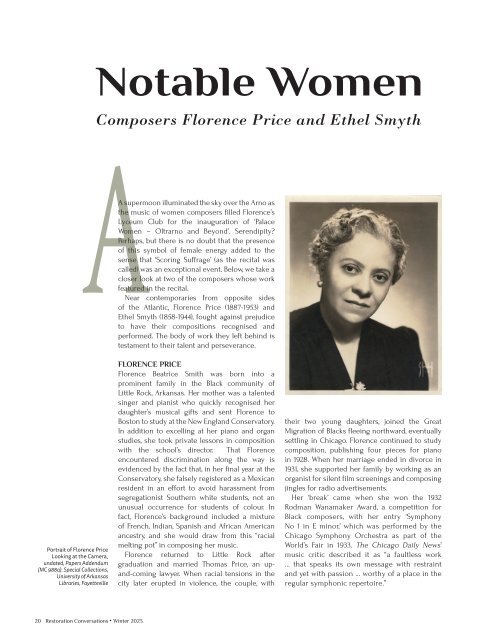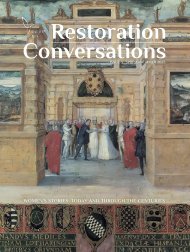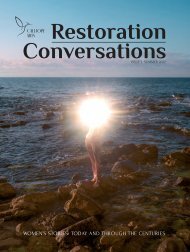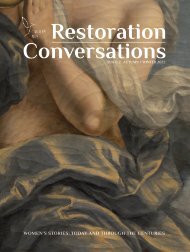Winter 2023
Restoration Conversations is a digital magazine spotlighting the achievements of women in history and today. We produce two issues a year: Spring/Summer and Fall/Winter
Restoration Conversations is a digital magazine spotlighting the achievements of women in history and today. We produce two issues a year: Spring/Summer and Fall/Winter
Create successful ePaper yourself
Turn your PDF publications into a flip-book with our unique Google optimized e-Paper software.
Notable Women<br />
AComposers Florence Price and Ethel Smyth<br />
A supermoon illuminated the sky over the Arno as<br />
the music of women composers filled Florence’s<br />
Lyceum Club for the inauguration of ‘Palace<br />
Women – Oltrarno and Beyond’. Serendipity?<br />
Perhaps, but there is no doubt that the presence<br />
of this symbol of female energy added to the<br />
sense that ‘Scoring Suffrage’ (as the recital was<br />
called) was an exceptional event. Below, we take a<br />
closer look at two of the composers whose work<br />
featured in the recital.<br />
Near contemporaries from opposite sides<br />
of the Atlantic, Florence Price (1887-1953) and<br />
Ethel Smyth (1858-1944), fought against prejudice<br />
to have their compositions recognised and<br />
performed. The body of work they left behind is<br />
testament to their talent and perseverance.<br />
Portrait of Florence Price<br />
Looking at the Camera,<br />
undated, Papers Addendum<br />
(MC 988a). Special Collections,<br />
University of Arkansas<br />
Libraries, Fayetteville<br />
FLORENCE PRICE<br />
Florence Beatrice Smith was born into a<br />
prominent family in the Black community of<br />
Little Rock, Arkansas. Her mother was a talented<br />
singer and pianist who quickly recognised her<br />
daughter’s musical gifts and sent Florence to<br />
Boston to study at the New England Conservatory.<br />
In addition to excelling at her piano and organ<br />
studies, she took private lessons in composition<br />
with the school’s director. That Florence<br />
encountered discrimination along the way is<br />
evidenced by the fact that, in her final year at the<br />
Conservatory, she falsely registered as a Mexican<br />
resident in an effort to avoid harassment from<br />
segregationist Southern white students, not an<br />
unusual occurrence for students of colour. In<br />
fact, Florence’s background included a mixture<br />
of French, Indian, Spanish and African American<br />
ancestry, and she would draw from this “racial<br />
melting pot” in composing her music.<br />
Florence returned to Little Rock after<br />
graduation and married Thomas Price, an upand-coming<br />
lawyer. When racial tensions in the<br />
city later erupted in violence, the couple, with<br />
their two young daughters, joined the Great<br />
Migration of Blacks fleeing northward, eventually<br />
settling in Chicago. Florence continued to study<br />
composition, publishing four pieces for piano<br />
in 1928. When her marriage ended in divorce in<br />
1931, she supported her family by working as an<br />
organist for silent film screenings and composing<br />
jingles for radio advertisements.<br />
Her ‘break’ came when she won the 1932<br />
Rodman Wanamaker Award, a competition for<br />
Black composers, with her entry ‘Symphony<br />
No 1 in E minor,’ which was performed by the<br />
Chicago Symphony Orchestra as part of the<br />
World’s Fair in 1933. The Chicago Daily News’<br />
music critic described it as “a faultless work<br />
… that speaks its own message with restraint<br />
and yet with passion … worthy of a place in the<br />
regular symphonic repertoire.”<br />
20 Restoration Conversations • <strong>Winter</strong> <strong>2023</strong>





